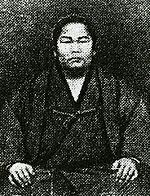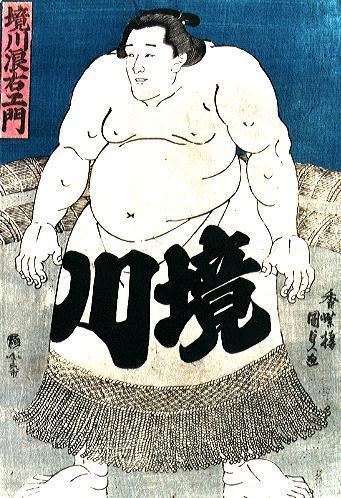Debut November, 1857 Died September 16, 1887 Retired January, 1881 Makuuchi rank Yokozuna | Name Sakaigawa Namiemon Height 1.69 m Role Sumo wrestler Weight 128 kg | |
 | ||
Born Masakichi Udagawa
May 28, 1841
Chiba, Japan ( 1841-05-28 ) Record 118-23-63
71draws-5holds(Makuuchi) Highest rank Yokozuna (February 1877) Championships 5 (Makuuchi, unofficial) Stable Sakaigawa stable (until 1881) Similar People Umegatani Totaro I, Ayagawa Goroji, Ozutsu Man'emon, Maruyama Gondazaemon, Miyagiyama Fukumatsu | ||
Sakaigawa Namiemon (境川 浪右衛門, May 28, 1841 – September 16, 1887) was a sumo wrestler from Ichikawa, Chiba Prefecture, Japan. He was the sport's 14th yokozuna.
Contents
Career

He made his debut in November 1857 and reached the top makuuchi division in April 1867, then fighting under the name Masuizan. He won his first tournament championship in June 1868 from the maegashira ranks, emerging undefeated with eight wins. He was promoted to ōzeki (then sumo's highest rank) in April 1870 after winning two tournaments in a row from the rank of sekiwake. Following his promotion, he changed his shikona to Sakaigawa. The name had previously been used by another wrestler from the same stable, who had been an ōzeki from 1857 to 1861.
Sakaigawa was initially given a yokozuna licence by the Osaka based House of Gojo in February 1876. He was admitted as a yokozuna by the House of Yoshida Tsukasa in February 1877. At that time, the Meiji Restoration was confusing the sumo world. Many sumo wrestlers were promoted to nominal yokozuna and the worth of the title yokozuna became very diluted as a result. Among them, later on, Sakaigawa became the only yokozuna admitted officially.
Sakaigawa retired in January 1881. In the top makuuchi division, he won 118 bouts and lost 23 bouts, recording a winning percentage of 83.7. However, he also recorded 71 draws because he often let his opponent attack first. He was nicknamed the "Meiji era Tanikaze".
Top division record
*Championships for the best record in a tournament were not recognized or awarded before the 1909 summer tournament and the above unofficial championships are historically conferred. For more information see yūshō.
